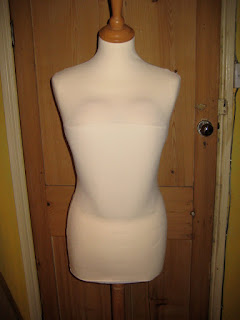
The tiniest shirt we have so far had to make. In the picture you'll see an original taken from 'Clothes & the Child' by Ann Buck. (ISBN 0-903585-29-4). The other picture is the copy. After the inevitable Oooohs! and ahhhs! from the staff at break, it got me to thinking about just what is it about miniature clothes that induces that reaction in women (and female costumiers in particular!). Most little girls like dressing dolls. We think it's a sort of 'hardwired' thing, where nature is way ahead of nuture and as they grow older only the style of 'doll' changes. On seeing a small child's clothing, most ladies will not remark on the style or materials and instead will say "Isn't it tiny!" or "Isn't it cute!"
Apprentices in the furniture workshops of the world often turned out exquisite 'apprentice pieces' to show their mastery of the craft and in some cases they are now worth more than the full size alternatives. Miniaturisation also happened in fashion history, where dolls were made as 'fashion messengers' or 'fashion envoys', if you will, being sent out by makers to clients and even to the courts around Europe.
In a 'pot luck' survey, a lot of costumier's dressed dolls in their childhood, especially those that work in the historical field. Were they subconsciously starting out on apprentice pieces? If so, then why aren't 'samplers' still popular?
Some think that, by definition, children's clothing should be cheaper than adults.We can quite see why people arrive at that belief. Clearly there is a cost saving on fabric, but the cutting is more demanding as there is less tolerance, so any imperfections in stitching will glare and extra time could be needed to make up. Small, nimble fingers are required, which, in history, children were employed for. Ahhh, Not so cute!







